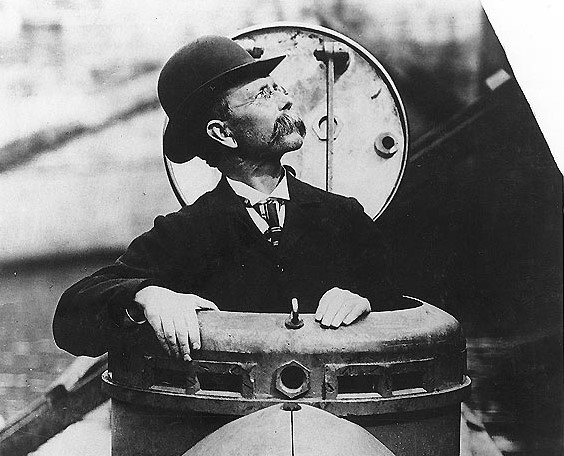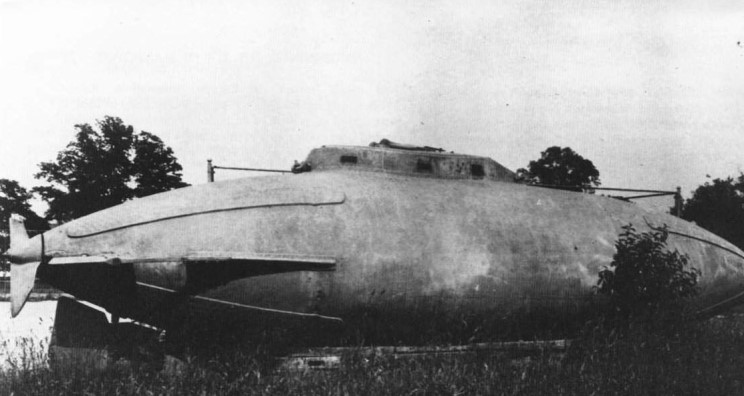In 1873 John P. Holland arrived in Boston, Massachusetts. He had emigrated from Ireland in the hopes of a
better life and to avoid the poverty and famine in his homeland. Born in 1841, Holland was a school teacher
by profession but, a pioneer at heart. His day job at a school in Patterson, NJ was what he did to earn a living
but at night, he came to life and designed submarines. His passion for submarine design goes back as far as
1859 when he drew sketches of vessels designed for underwater operation but it was not until he moved to
America that the drawings would become reality.
After arriving home he would tinker in his shop and finally the design for a submarine was produced. A small one, only about 15' in length and powered by a man using foot pedals. It is not clear if this boat was ever
built or if it remained only a drawing or model. However, a student of Holland's saw some of the plans for the
submarine and suggested he approach the Navy to see if they would buy it. His design was soundly rejected
by Capt. Simpson in Washington as unpractical, after all there was no way for anyone to see where they
were going. Holland's response to Simpson was "there are such things as compasses". In Simpson's reply to
Holland he said "no one but an utter fool would dream of going beneath the surface in such a crackpot
contraption".
In order to build a submarine money is required and Holland had none. His brother Michael had some contacts
with the Fenian Brotherhood and suggested to them that they buy a submarine from Holland and use it against
British shipping. (The Fenian Brotherhood was a predecessor to Sin Fein and the IRA) Even though the idea
seemed a bit far fetched, the Brotherhood came up with $4,000 and Holland began construction of the vessel.
When finished the little submarine was 14' long and weighed 2 1/2 tons and was fitted with a gas powered
engine, the first in history. The launch however was another story. On May 22, 1878 he took the boat to the
Passiac River and in front of a gathered crowd, including members of the Brotherhood, the boat took to the
water for the first time and promptly sank to the bottom. The boat was raised, cleaned out and launched again with the same result. Someone in the crowd suggested that the boat was nothing more than an "iron coffin" of course the name stuck, even to this day. The problem was that two screws had been left out causing the boat to flood. After this was remedied the third launch was a success. Holland took the boat to a depth of about 12' and came back to the surface without difficulty. The Brotherhood were pleased with the result and ordered a second, larger boat to be built.
This was done at the Delameter Iron Works in New York and when finished the Fenian Ram was 31' long and
weighed almost 19 tons. Her gasoline engine provided 15 hp and worked on compressed air while submerged.
The launch took place on May 1, 1881 on the Hudson River and this time there was no disaster. Everything
went as planned and the boat was a success. Of course the Brotherhood fell apart and the Fenian Ram was
seized by the local authorities but, the boat is still in existence today. The Fenian Ram is on display at the
Patterson Museum in Patterson, NJ. A testament to the father of the modern submarine, John P. Holland.

